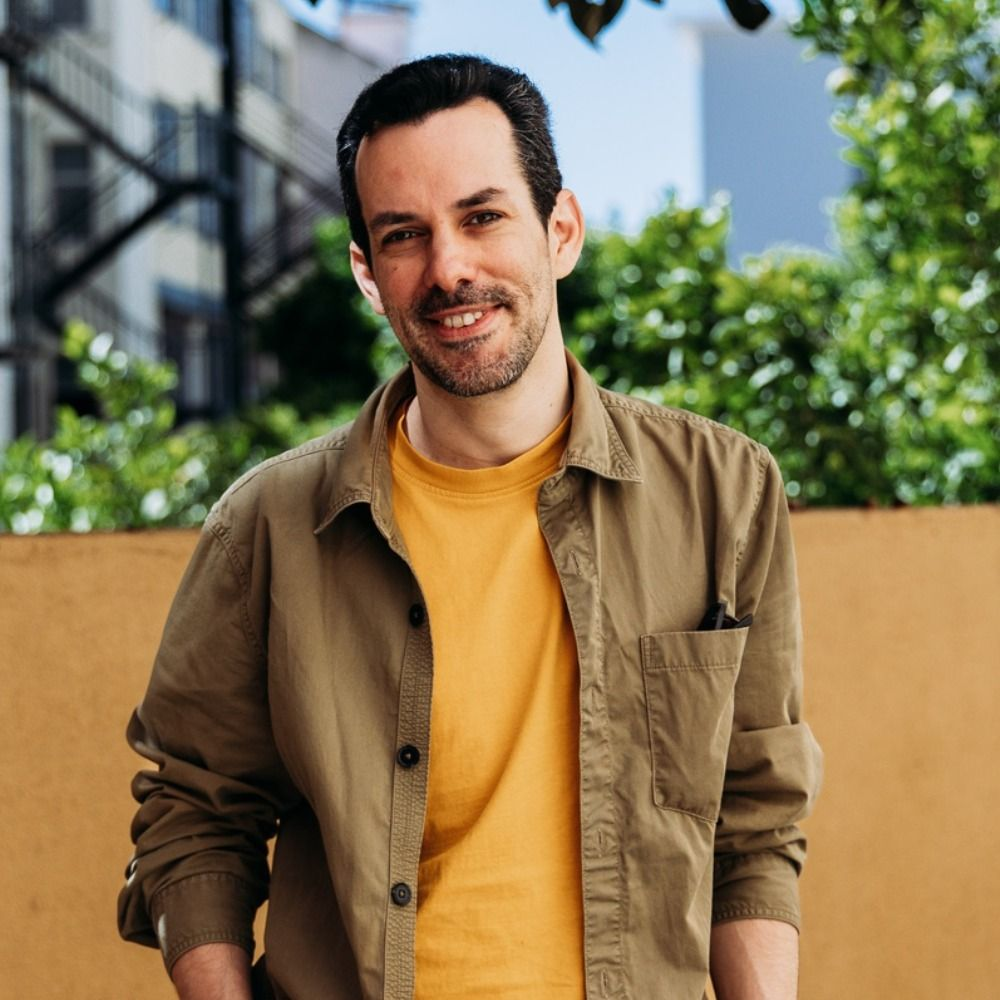We are not in PR anymore
Twenty years on, PR is still wrestling with old debates. Maybe it’s time we ask harder questions about where the profession stands today.

A few months back, "The press release is dead" meme was posted on LinkedIn again. And I am sure it was posted a few more times without me knowing. I chuckled.
I built my first "corporate" website before finishing my graduation. The course was all theory and no practice during the first 2 of 4 years, and the Student Union needed a new website. I was here for the Web 2.0 boom around 2006 / 2008 and surfed the tide of the blogosphere. My blog about online Public Relations was one among three written in Portuguese.
Cut scene, and I have worked in social media, marketing agencies, and big corporations. I have been a copywriter, a developer and a few other things.
Follow me on a path to argue towards a reframing of PR to match the current ecosystem.
Gregory-MS, from start to infinity
Chapter 1: Good friends and technology
It's 2020, and I picked up a book on Python to keep busy during quarantine. "How to automate the boring tasks" was just the thing for me. Using what I learned from it and from my friends, especially Rui Carmo, who showed me a low-code automation software, I hacked up a way to search PubMed for Multiple Sclerosis research. Guess that at this point, I count as a hobbyist.
Another great friend, António Lopes, saw me listing papers I was considering relevant for me and gave me a proof-of-concept code on how to use AI models to predict the relevance of each paper. Project Gregory began taking shape, and I was okay with being the junior developer.
All of this was happening inside a tiny computer that I keep inside a drawer. And as it grew bigger, I had to rent a Virtual Private Server (VPS) and dive into Linux to configure it as a web server and automation engine. It's the role usually called System Administration or DevOps, or something else around the same idea.
This also meant picking up bits and pieces of web design knowledge and components. Fortunately, the web is filled with resources to learn, and it wouldn't be the first or 20th time I was doing it. At this point, I am a Frontend developer.
With so much going on, I can call myself a product manager, or product owner, a role that I had already performed when managing the corporate websites of the EDP Group.
This was the result.

Chapter 2: Is this PR?
Step by step, the project needed someone to write the content, explain the goals, and connect with stakeholders. I knew what was needed and found good people to hire for help. Margarida Gomes helped with the design, and Raquel Henriques put her skills into organising and writing the press kit. I am split between operations and project management.
While this is going on, I keep trying to engage with my medical team so that Gregory can be useful to them. And currently, this is also a daily struggle, trying to connect with stakeholders to expand the project and make it useful for everyone. Stakeholder outreach?
Seeing interest from other patients, I connected Gregory to Twitter, and then both Mastodon and Blue Sky. I keep an eye on these last two and regularly check for questions and other interactions. Community Management.
To improve my odds of reaching the right people, I reviewed my content strategy for LinkedIn, focusing it more on my small firm, the Lisbon Collective, because it pays the bills, and on Gregory-MS, which at this point is my crown jewel. Content Strategist or Reputation Manager?
The project also needed a lot of accountability, so I set up a non-profit organisation to handle donations and expenses, and took it upon myself to always write an activities report that is as thorough as I possibly can. Am I a compliance officer, or do I manage donor relationships?
This desire for transparency and self-accountability is aligned with the core values I wanted to imbue in the project since day one. You see, Gregory got his name and soul from popular culture. His image and demeanour are inspired by Baymax from the movie Big Hero 6, his eagerness to learn and connect with humans comes from Johnny Five from the movie "Short Circuit". The name comes from the TV Show House MD, and represents the relentless pursuit of an answer. At this point, I am a Brand Strategist, I guess.
Are we there yet? No, because now we need to make sure our effort is paying off, so we set up a transparent and privacy-friendly analytics software to measure the Outcome of our output. Maybe we can label this as Data Protection Officer, or Business Intelligence.
That's it? Almost. Because over the past few months, I have been quite aggressively reaching out to people on LinkedIn. Researchers, doctors, and other potentially interested parties have been getting comments from me directing their attention to the Gregory-MS website and how it relates to their post, even slightly. Brand Ambassador?
The goal is to reach out and have short 1-on-1 meetings with people in the field of Multiple Sclerosis research, aiming for the goal of one day being able to walk again. I am not trying to make a profit, I am trying to survive and do something that will help everyone.
Chapter 3: What's PR got to do with it?
Don't get me wrong, there was a lot of classical PR involved in pushing Gregory forward. I took on the role of Press Officer and Media Relations by sending press releases and reaching out to journalists.
Handling emails and answering support questions is also another part of my day; most of them come from patients who are using the site to find clinical trials.
I still write the blog posts and have been participating in Podcasts and events to tell this story and share my hope for everyone suffering with Multiple Sclerosis.
Boundary scanning became second nature to me. And I handle Stakeholder Mapping like a pro.

Twenty years of Public Relations and ...
We're back to discussing the death of the press release and the importance of the online newsrooms. The profession is still going back and forth with the Advertising Value Equivalent (AVE) and the recognition of its contribution to the organisation. PR still needs a seat at the table where decisions are made.
It deserves that seat and can bring value that is simply intangible. I understand why that is still an issue, but we need to address a list of missed opportunities.
Web 2.0 opened the door for PR to take charge of social media and the corporate website. The profession wasn't fast enough, and those fields were conquered by User Experience professionals, marketing agencies promising social selling, and brands wanting to turn their social media feeds into short-form jokes and entertaining content.
Search Engine Optimisation (SEO) could have been another win for PR, but it was overtaken by developers who understood code and the metrics from Google's Search Console.
The task of setting the proper metrics to measure the performance of communication efforts ended up in the hands of consultancy firms. PR wasn't equipped to understand the metrics of the new social media platforms, or hadn't secured enough of a reputation for it within the organisation.
It's been 20 years, and the press release still isn't dead, and the AVE is doing well. And we are still discussing ways to prove the worth of the profession.
Jobs to be done, and a question to be answered
The list of missed opportunities I listed before is a sample; the profession could have grown much more than it did if it had done its part of boundary scanning. The irony isn't lost.
In hindsight, reframing PR to follow the changing tides of Web 2.0. Breaking it apart, renaming it, emphasising the skills in understanding stakeholders, taking charge of helping startups pitch for venture capital, and owning the role of investor relations for startups.
These were the "jobs to be done" and the question is "why didn't we do it?".
Of course, this is a binary view of what happened. There are companies and professionals who saw the opportunity and made the best of it. Why aren't they the majority?
We can focus more on the profession and ask why we are still using the same definitions of Public Relations. They have their value but like everything, need to be rethought to stay up-to-date.
We're not in PR anymore, then where are we?
I barely know who I am lately, much less the answer to this question.
From the whole odyssey of building and managing GregoryAi, I don't feel like I can call myself a Public Relations professional. And even in the tech world, I need to be broken down into pieces to fit the backend-backoffice-frontend-design-content model.
I'm a one-man show of corporate schizofrenia.
The role of Digital Strategist seems to fit because nobody really knows what it means, and I can adapt the dialogue to fit the needs of the client. Clients need results more than they need to know which box holds the solution.
And now we reach the point where we have defined a problem for the PR profession, for which I do not have a hint of an idea on how to solve. How to redefine itself for the current times, in hopes of not missing the AI train.
I hope someone smarter than me will find this post and call me an idiot in the comments while they school me into understanding what PR is and can be in the current times. But either way, I don't feel like I am in PR anymore.
Yes. But I still would like to know what your thoughts are.



Comments ()